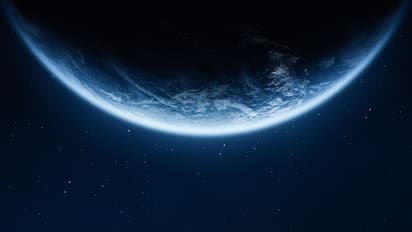NASA's James Webb Telescope confirms its first exoplanet LHS 475 b, says, 'almost same size as ours'

Synopsis
After carefully studying the entire data from NASA's Transiting Exoplanet Survey Satellite (TESS), which indicated the planet's existence, the team decided to observe it with Webb. Webb's near-infrared spectrograph (NIRSpec) recorded the planet simply and clearly just after two transit observations.
Researchers used NASA's James Webb Space Telescope, the largest and most powerful space telescope ever built, to officially confirm the existence of an exoplanet for the first time. Kevin Stevenson, and Jacob Lustig-Yaeger, who leads the team, said that 'formally classified as LHS 475 b, the planet is almost exactly the same size as our own, clocking in at 99 per cent Earth's diameter.'
After carefully studying the entire data from NASA's Transiting Exoplanet Survey Satellite (TESS), which indicated the planet's existence, the team decided to observe it with Webb. Webb's near-infrared spectrograph (NIRSpec) recorded the planet simply and clearly just after two transit observations.
According to Lustig-Yaeger, "The existence of the planet is undeniable. Webb's impeccable data backs it up." Stevenson noted, "It's also a small, rocky planet, which is impressive for the observatory."
In his statement, the astronomy division director at NASA headquarters in Washington, Mark Clampin, said, "These first observational data from an Earth-size, rocky planet opens the door to numerous future opportunities for investigating rocky planet atmospheres with Webb."
"Webb is bringing us closer to a new knowledge of Earth-like places beyond our solar system, and the mission is just getting started," he added.
The planet, 41 light-years away, is a few hundred degrees warmer than Earth and has a two-day orbit. The outcome of the researchers has opened up the potential of locating Earth-sized planets orbiting smaller red dwarf stars.
"This confirmation of a rocky planet shows the precision of the mission's instruments," Stevenson added. "And this is just the beginning of countless discoveries. With this telescope, rocky exoplanets are the new frontier," said Lustig-Yaeger.
Also read: Spalshdown! NASA's Orion capsule returns to Earth after 25-day lunar flight
Also read: NASA’s Artemis 1 Orion spacecraft to splashdown on Dec 11; Here's when and where you can watch live
Also read: Alert! 65 feet wide asteroid 2022 UD72 to fly by Earth at 15,408 km/h; check details